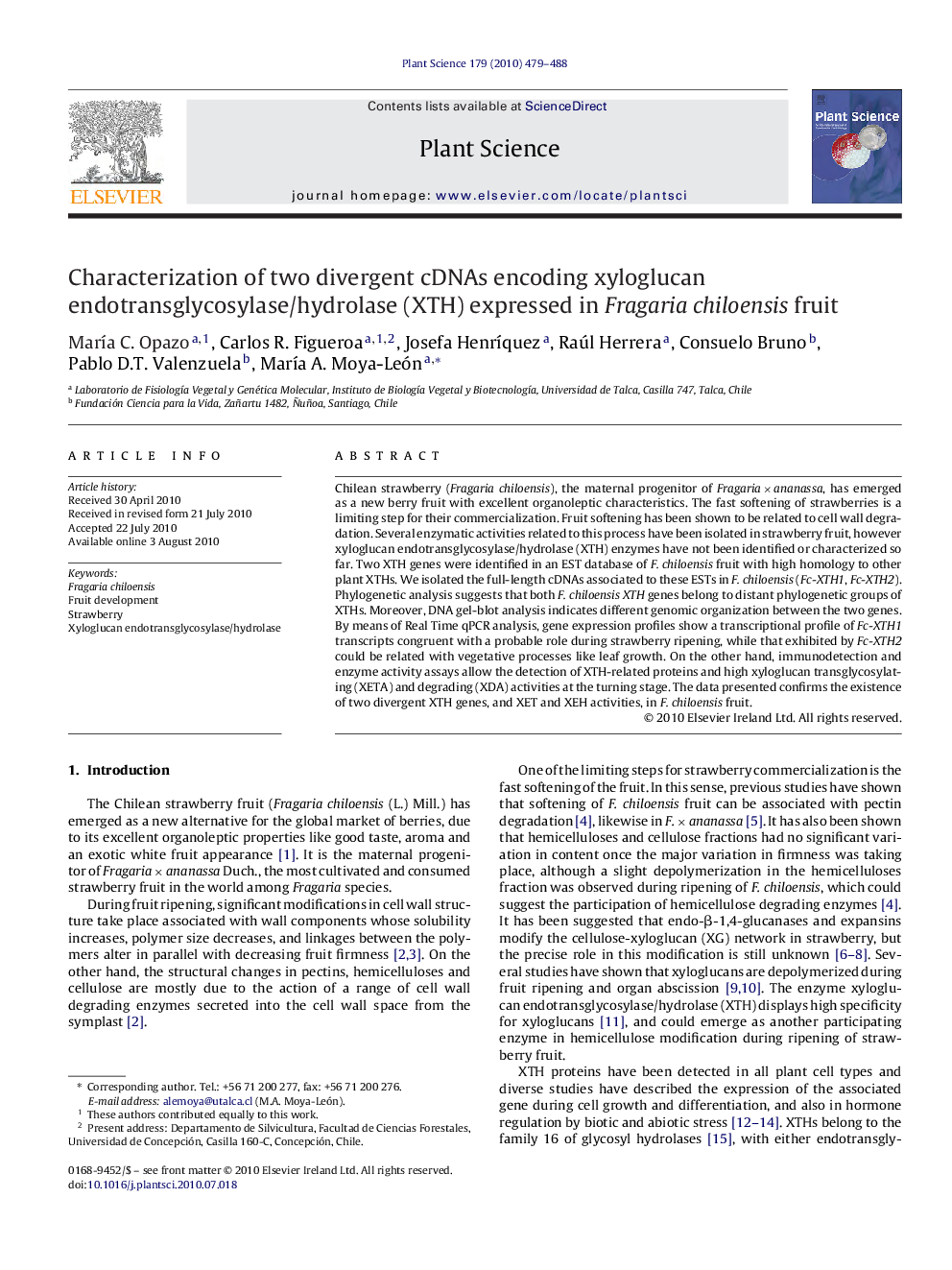| Article ID | Journal | Published Year | Pages | File Type |
|---|---|---|---|---|
| 2017605 | Plant Science | 2010 | 10 Pages |
Chilean strawberry (Fragaria chiloensis), the maternal progenitor of Fragaria × ananassa, has emerged as a new berry fruit with excellent organoleptic characteristics. The fast softening of strawberries is a limiting step for their commercialization. Fruit softening has been shown to be related to cell wall degradation. Several enzymatic activities related to this process have been isolated in strawberry fruit, however xyloglucan endotransglycosylase/hydrolase (XTH) enzymes have not been identified or characterized so far. Two XTH genes were identified in an EST database of F. chiloensis fruit with high homology to other plant XTHs. We isolated the full-length cDNAs associated to these ESTs in F. chiloensis (Fc-XTH1, Fc-XTH2). Phylogenetic analysis suggests that both F. chiloensis XTH genes belong to distant phylogenetic groups of XTHs. Moreover, DNA gel-blot analysis indicates different genomic organization between the two genes. By means of Real Time qPCR analysis, gene expression profiles show a transcriptional profile of Fc-XTH1 transcripts congruent with a probable role during strawberry ripening, while that exhibited by Fc-XTH2 could be related with vegetative processes like leaf growth. On the other hand, immunodetection and enzyme activity assays allow the detection of XTH-related proteins and high xyloglucan transglycosylating (XETA) and degrading (XDA) activities at the turning stage. The data presented confirms the existence of two divergent XTH genes, and XET and XEH activities, in F. chiloensis fruit.
Graphical abstractFigure optionsDownload full-size imageDownload as PowerPoint slideResearch highlights▶ Two divergent XTH genes (Fc-XTH1 and Fc-XTH2) were identified in F. chiloensis fruit, with high homology to other plant XTHs. ▶ Fc-XTH1 transcripts are mainly expressed in fruit tissues; high transcript levels are detected at the large green and turning stages, congruent with a role in strawberry ripening. ▶ Fc-XTH2 transcripts are expressed in fruit at a low level, but at high level in leaves; Fc-XTH2 could be involved in vegetative processes like leaf growth.
